Sweet Stories of India – Regional Classics
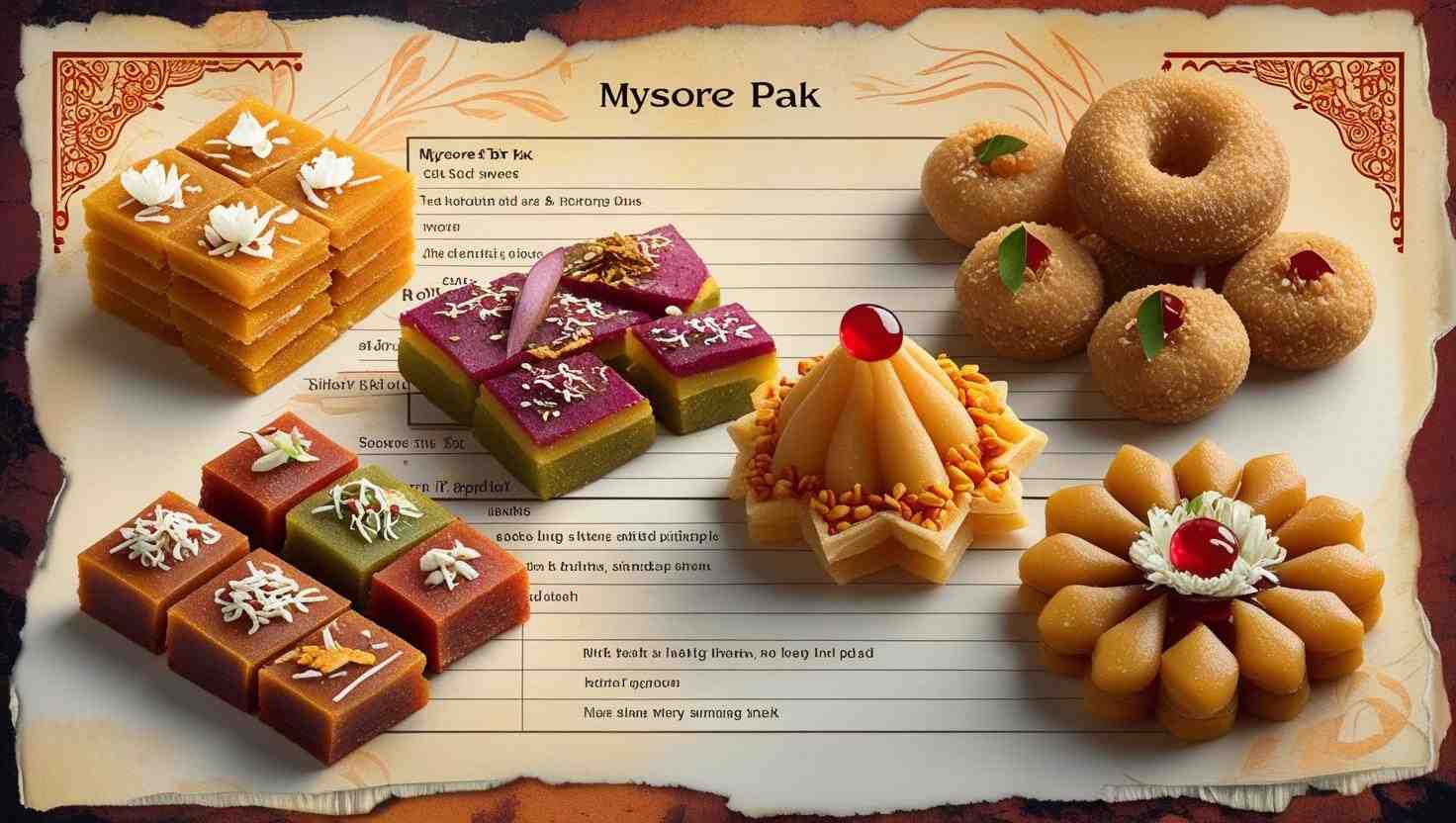
Sweet Stories of India – Regional Classics
India is a land where every festival, every gathering, and every celebration feels incomplete without something sweet. From the lanes of Mathura echoing with tales of Krishna’s childhood mischief, to the royal kitchens of Mysore that once created delicacies for kings, every region of India offers its own signature mithai. These sweets are not merely desserts—they are carriers of culture, nostalgia, and identity. Each bite whispers a story of its place of origin, the traditions it honors, and the joy it brings to people.
This blog takes you on a journey through seven legendary sweets that represent India’s diverse culinary heritage. Along the way, we’ll discover their fascinating stories, cultural roles, and even the ways they continue to evolve in modern kitchens. Think of it as sitting with family on a festive evening, listening to elders narrate stories while passing around a mithai box—each piece bringing laughter, memories, and warmth.
1. Mysore Pak – A Royal Gift from Karnataka
The Story:
Mysore Pak is more than just a sweet; it is a piece of royal history. This golden, melt-in-the-mouth delicacy was born in the royal kitchens of Mysore during the reign of Maharaja Krishna Raja Wadiyar IV. Legend says that a royal cook, Kakasura Madappa, experimented with gram flour, sugar, and a generous amount of ghee, creating what would become one of India’s most beloved sweets.
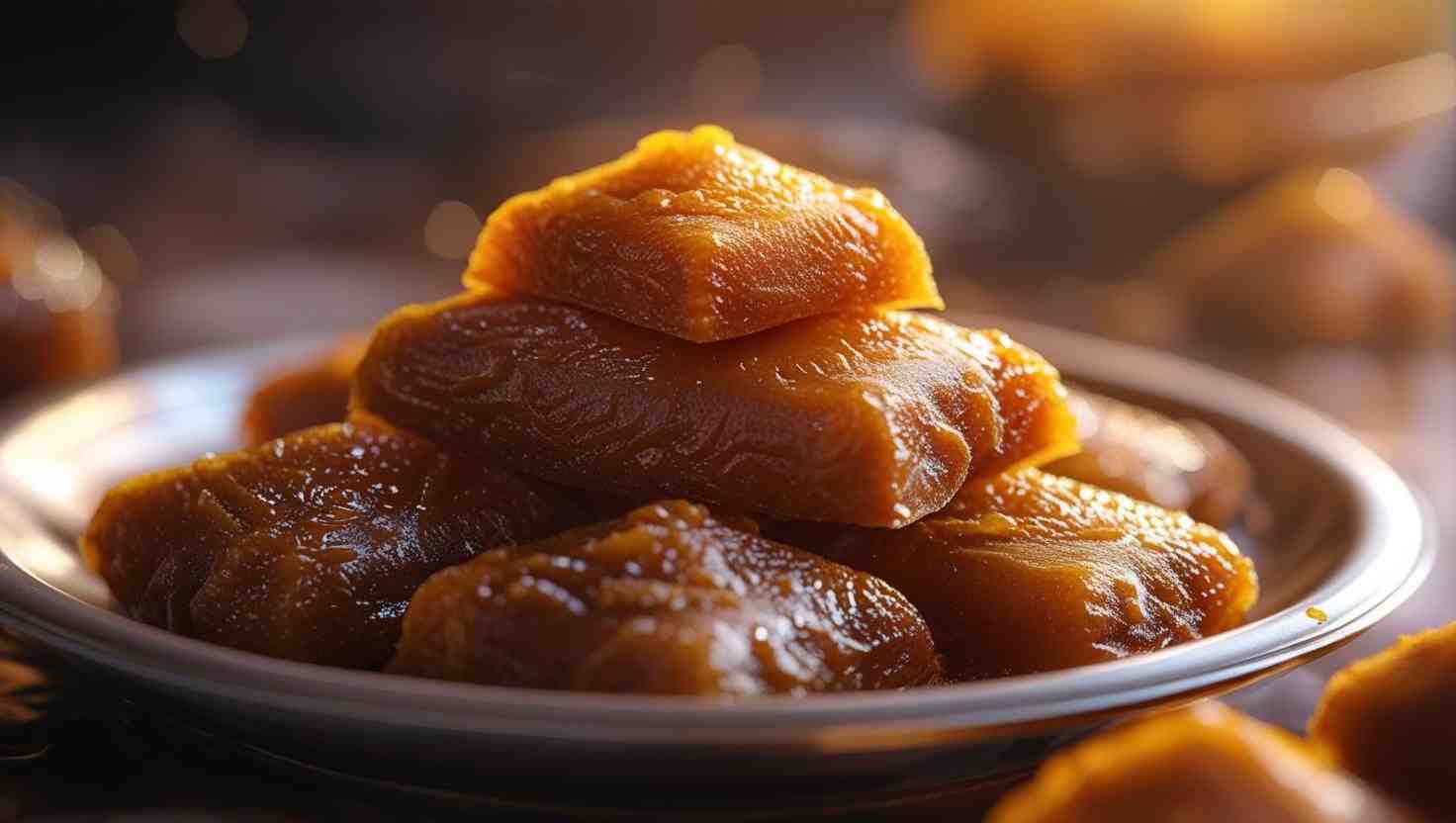
Taste & Texture:
Its buttery, fudge-like texture and rich aroma of ghee make it irresistible. The smoothness of gram flour blended with sweetness and the slight hint of cardamom gives it an unforgettable taste.
Did You Know?
In its early days, Mysore Pak was considered a hidden royal recipe and only served within the palace. Eventually, it was shared with the common people, and today it has become a household favorite across South India.
2. Soan Papdi – A North Indian Festival Favorite
The Story:
Crisp, flaky, and light—Soan Papdi is a North Indian treasure. Its origins are believed to be inspired by Persian sweets that traveled into India through trade routes. Over centuries, Indian halwais perfected the recipe, making it a festival staple.
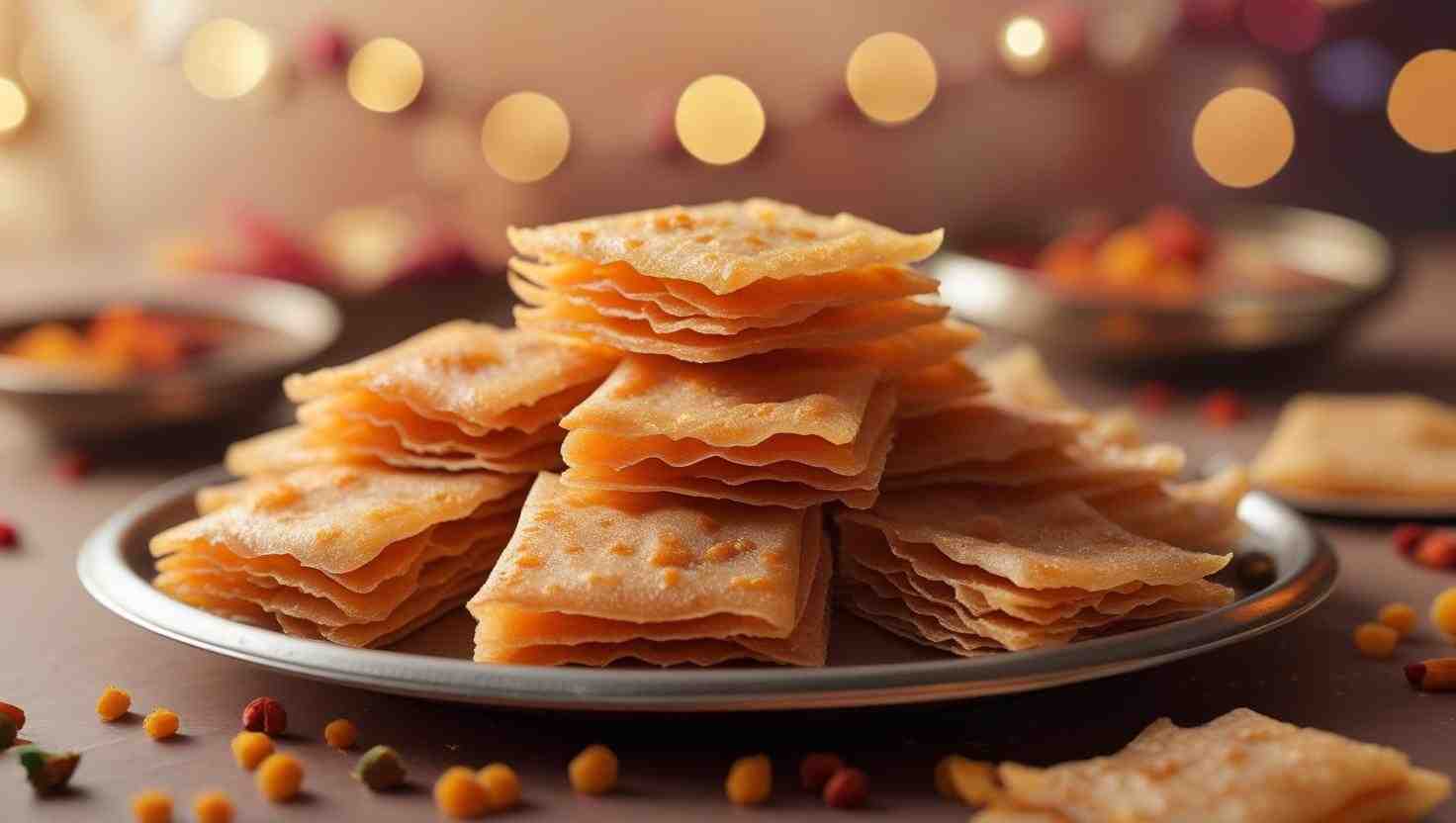
Taste & Texture:
The magic of Soan Papdi lies in its texture. It falls apart into delicate, airy flakes at the slightest touch, dissolving instantly in your mouth. Made from gram flour, all-purpose flour, ghee, sugar, milk, and cardamom, it’s both light and indulgent.
Fun Fact:
Soan Papdi has become synonymous with Diwali gifting. Its neat cube-like shape and long shelf life make it one of the most exchanged sweets during the festive season.
Kitchen Tip:
To add a modern twist, some people now sprinkle pistachios and drizzle saffron syrup over Soan Papdi cubes before serving.
3. Kaju Katli – The Diamond of Indian Mithai
The Story:
Kaju Katli, also known as Kaju Barfi, traces its roots back to the Deccan region of India. Its diamond-shaped form and luxurious cashew base make it one of the most premium mithais of India. Some legends suggest it was inspired by Mughal culinary traditions, which used nuts in abundance.
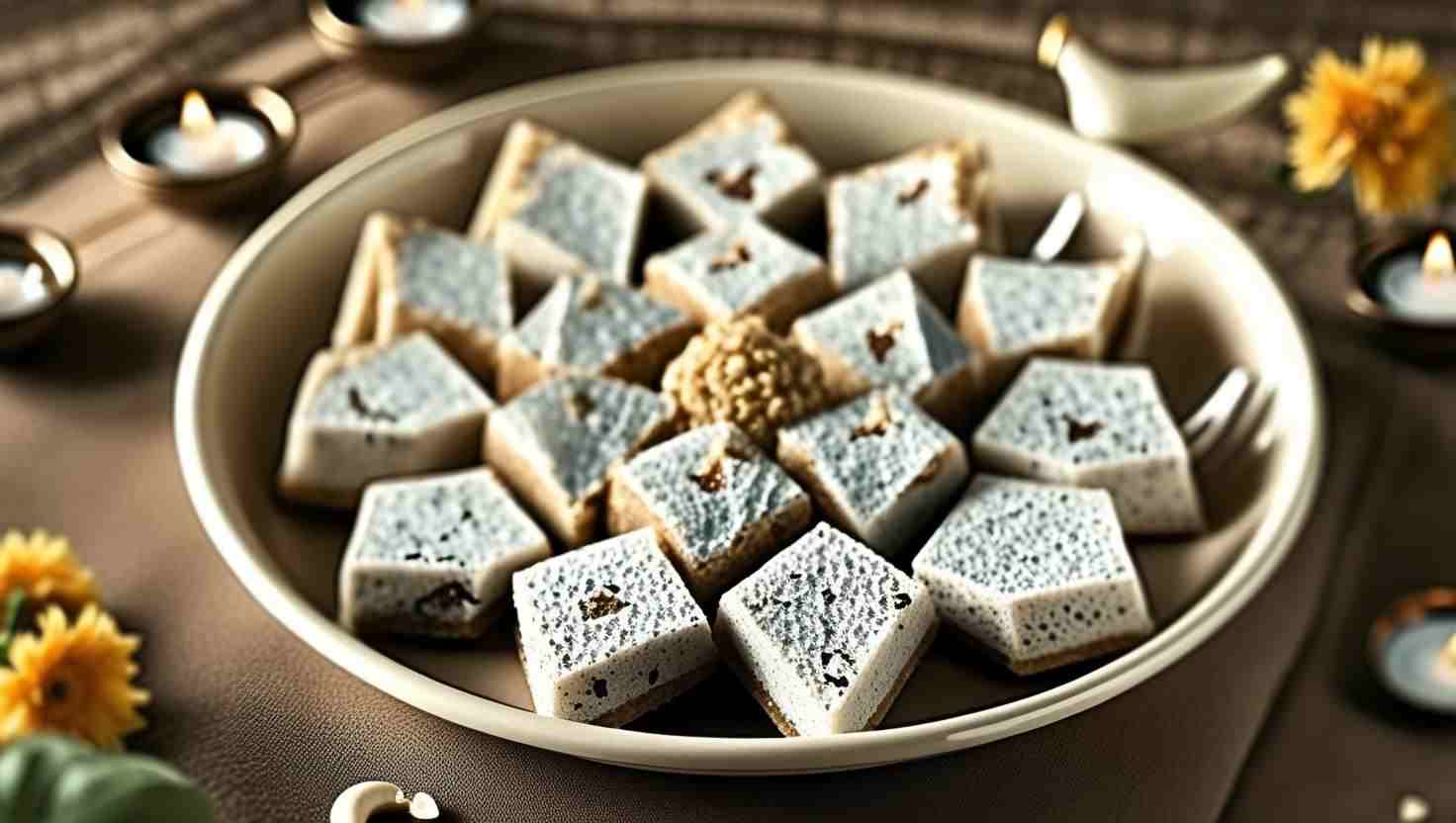
Taste & Texture:
Smooth, rich, and indulgent, Kaju Katli is made from finely ground cashew paste, sugar syrup, and a delicate garnish of edible silver leaf (vark). It has a subtle sweetness that allows the natural nutty flavor of cashews to shine.
Cultural Significance:
A Diwali favorite, Kaju Katli is often gifted to symbolize prosperity and joy. Its elegance and simplicity have made it a staple in festive gift boxes.
Did You Know?
In some parts of India, Kaju Katli is also prepared during weddings, as cashews are considered a symbol of wealth and good fortune.
4. Paneer Ghewar – A Rajasthani Marvel
The Story:
Paneer Ghewar is a jewel from Rajasthan. This festive delicacy is traditionally prepared during Teej and Raksha Bandhan. With its honeycomb-like structure, Ghewar is unique both in its appearance and taste. Adding paneer to it makes the texture richer and the flavor more decadent.
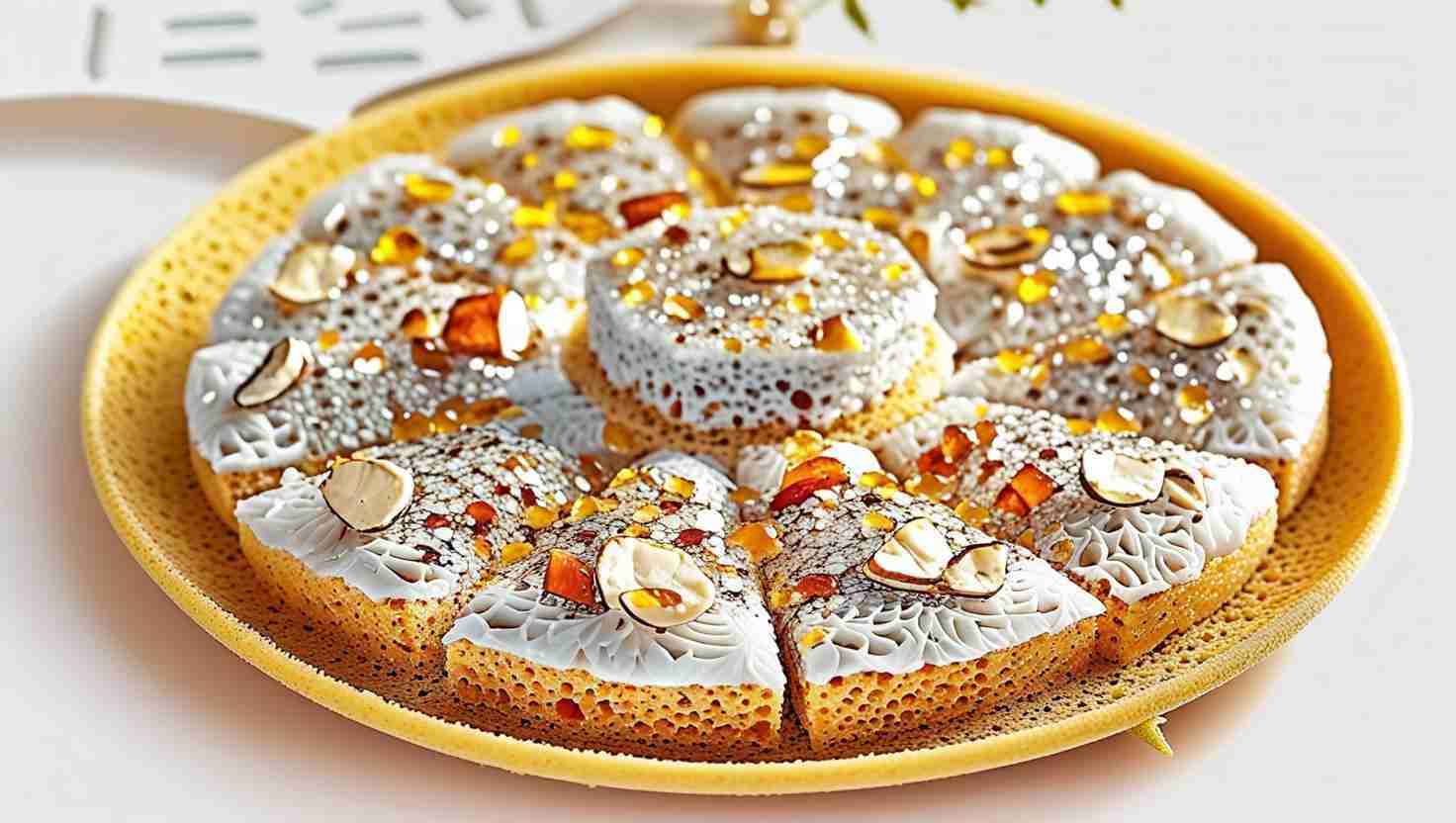
Taste & Texture:
Made with refined flour (maida), ghee, and sugar syrup, Paneer Ghewar offers a crispy yet moist bite. Paneer adds creaminess that balances beautifully with the sweetness of the syrup.
Cultural Significance:
Ghewar is deeply associated with Rajasthani celebrations, especially Teej when women exchange sweets and gifts. Its presence marks festivity and familial bonds.
Kitchen Note:
Making Ghewar at home is considered tricky, as it requires precision in pouring batter into hot ghee to form the honeycomb structure. But the results are worth the effort.
5. Malai Ghewar – A Creamy Rajasthani Indulgence
The Story:
A close cousin of the Paneer Ghewar, Malai Ghewar is another Rajasthani classic. What sets it apart is its topping of rich, luscious malai (cream), layered over the crispy base of Ghewar. This addition elevates the sweet into a richer, creamier indulgence.
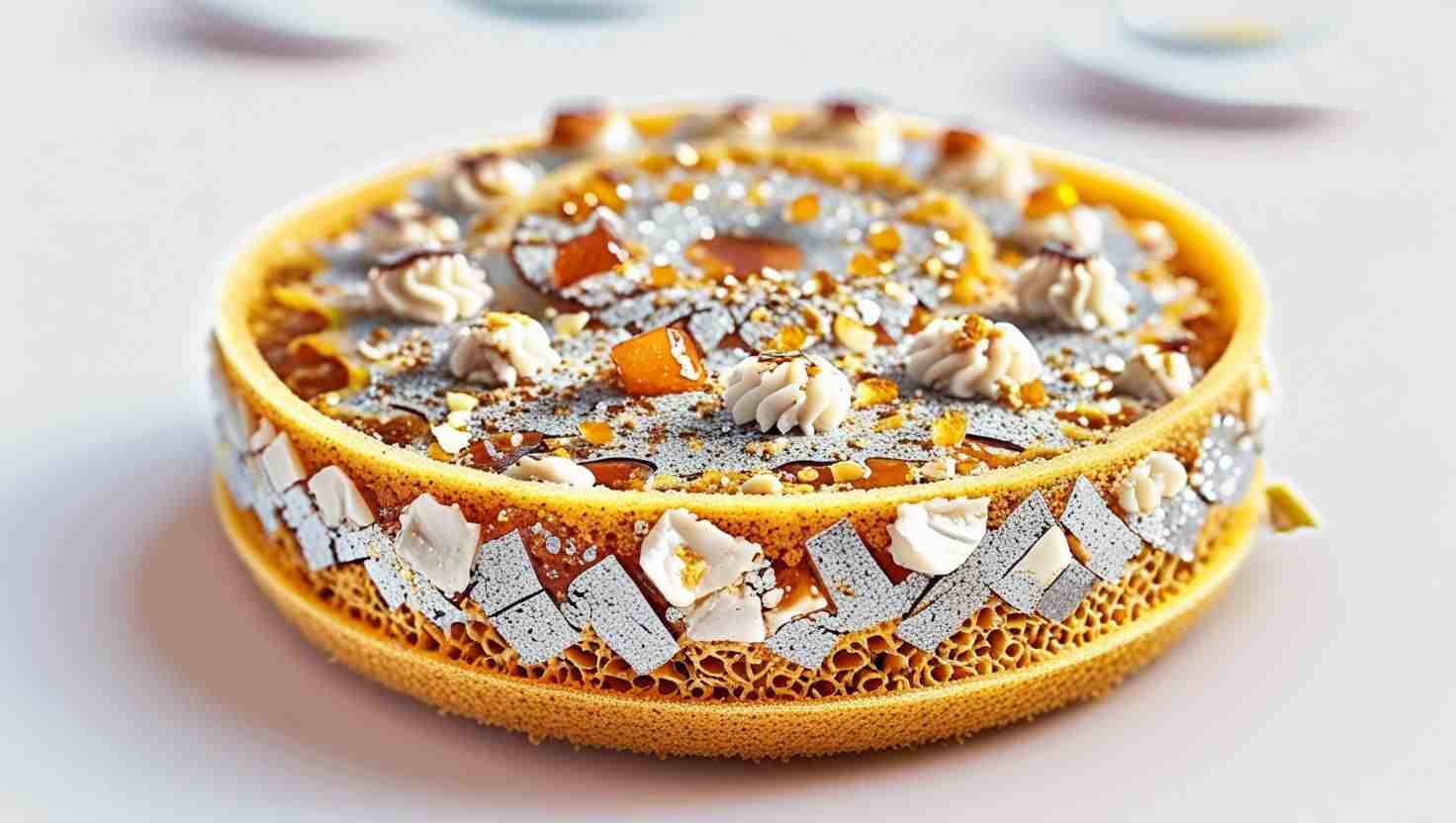
Taste & Texture:
The crisp, honeycomb-like disc of Ghewar paired with creamy malai and garnished with nuts and saffron creates a perfect harmony of crunch and softness. Each bite is indulgent and festive.
Cultural Significance:
Malai Ghewar is almost synonymous with Raksha Bandhan in Rajasthan. Sisters gift Ghewar to brothers, making it both a delicacy and a symbol of sibling love.
Serving Idea:
Top it with a sprinkle of rose petals for a royal festive presentation.
6. Mathura Peda – A Symbol of Devotion
The Story:
Mathura’s Peda is legendary. The city, closely tied to Lord Krishna’s tales, has made peda not just a sweet, but a symbol of devotion. Pilgrims visiting Mathura never leave without a box of peda, making it a cultural souvenir.
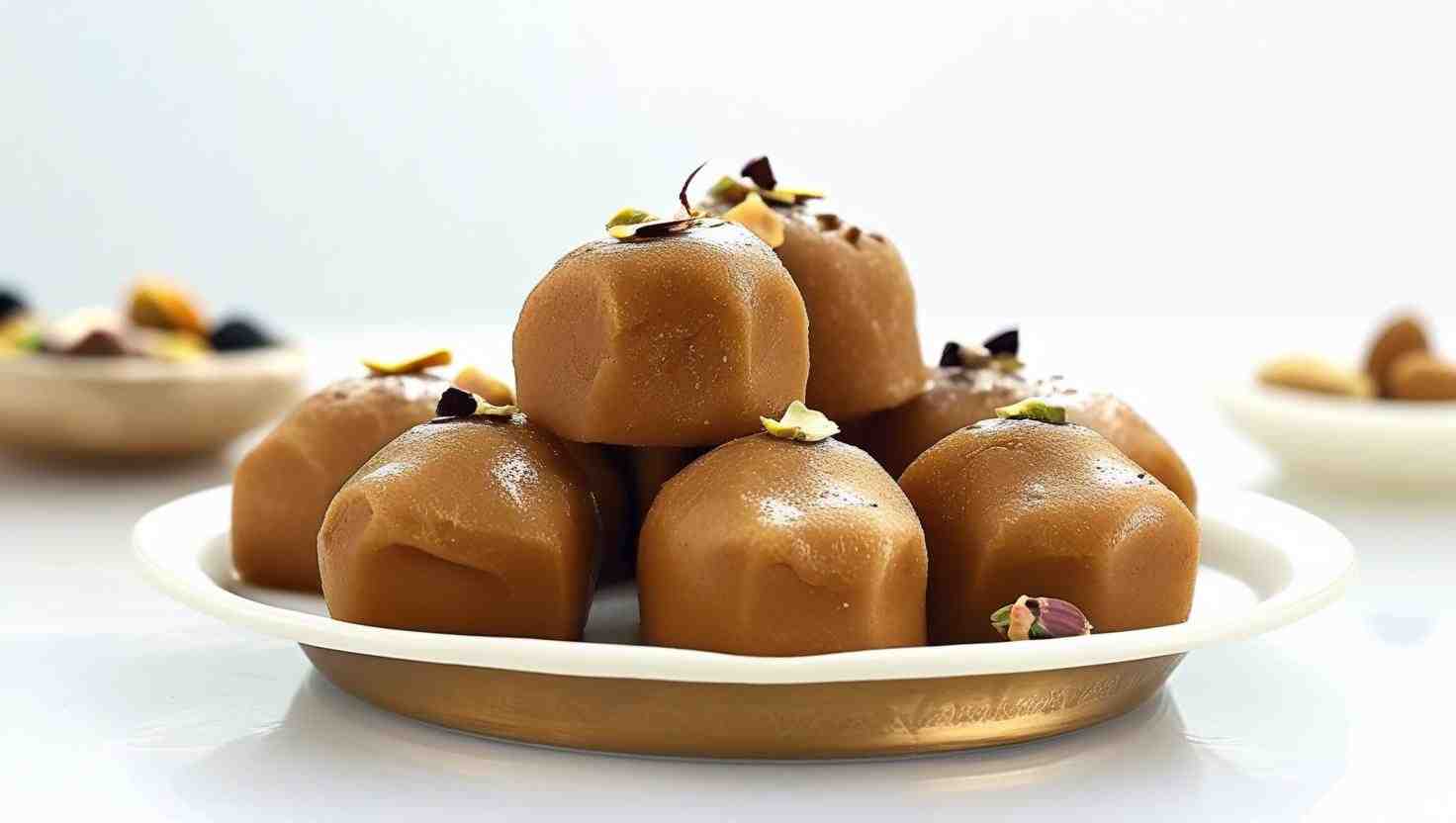
Taste & Texture:
Made from khoya (reduced milk solids), sugar, and cardamom, the peda is soft, grainy, and aromatic. Its richness is derived from slow cooking milk into khoya, ensuring depth of flavor.
Cultural Significance:
Offered at temples and festivals, Mathura Peda is as spiritual as it is delicious. It is also a staple during Janmashtami, honoring Krishna’s love for milk-based sweets.
Did You Know?
Mathura Pedas are often shaped by hand and sometimes even offered as prasad at major temples, adding a spiritual essence to the sweet.
7. Badam Louj – A Luxurious Almond Delight
The Story:
Badam Louj is a luxurious almond-based mithai that reflects the evolving tastes of Indian sweet-making. The word “Louj” refers to a dense, fudgy sweet, and in this version, almonds are the star. This sweet is a modern take on traditional nut-based delicacies.
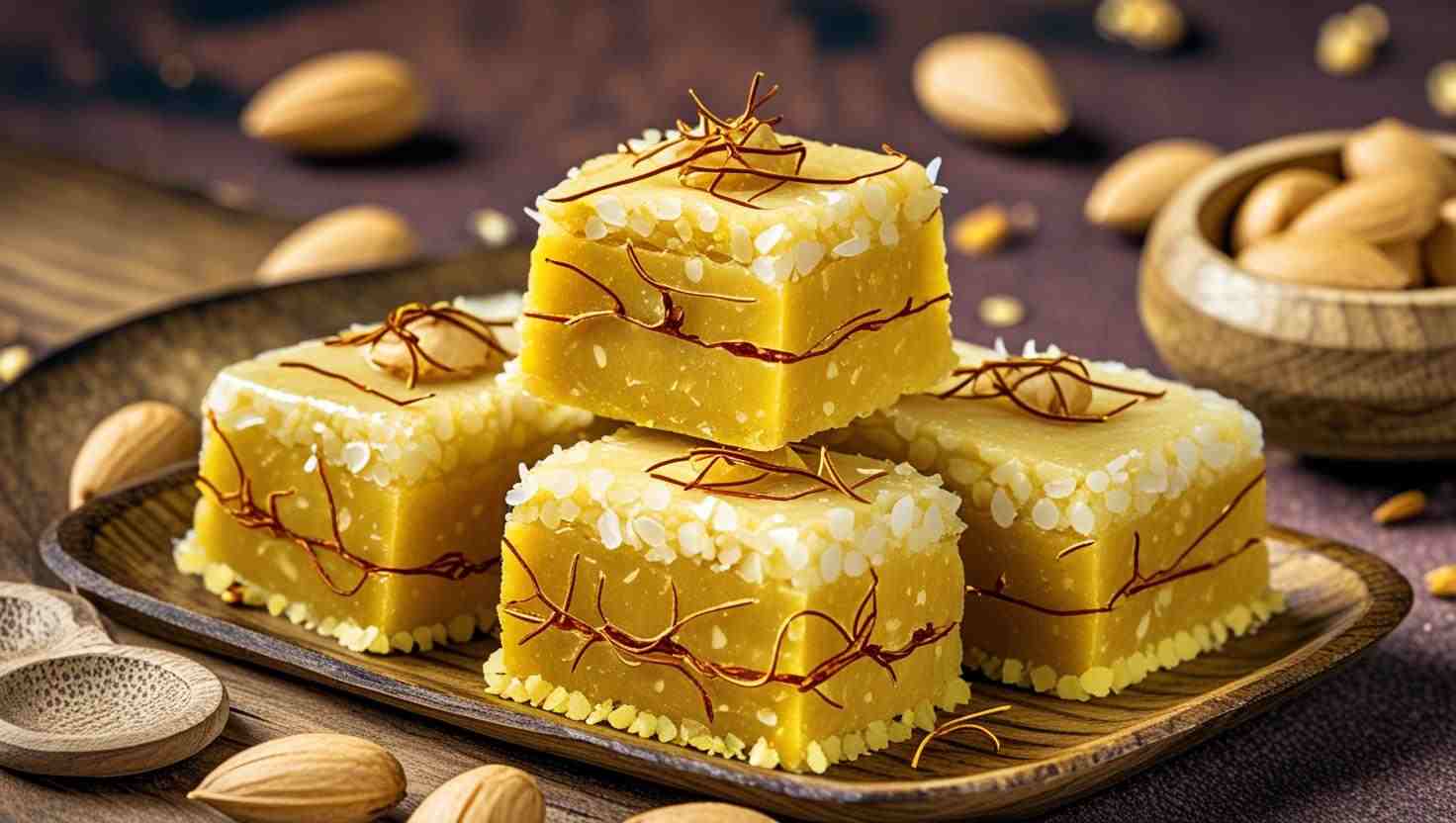
Taste & Texture:
Rich, dense, and nutty, Badam Louj melts slowly in the mouth, releasing the full-bodied flavor of almonds. Ghee and sugar give it a traditional richness, while the almond makes it a royal indulgence.
Cultural Significance:
While it doesn’t have centuries-old history like some other sweets, Badam Louj represents the modern evolution of Indian mithai—taking inspiration from tradition but creating something unique and luxurious.
Fun Twist:
Some contemporary chefs use saffron and rosewater to elevate the flavor of Badam Louj, blending heritage with innovation.
Sweetness Across Borders – Why These Classics Matter
Each of these sweets is more than an edible delight—they are cultural ambassadors. From Mysore Pak’s royal beginnings to Mathura’s spiritual pedas, from Rajasthani Ghewar’s festive essence to the modern luxury of Badam Louj, they showcase the diversity of India’s culinary landscape.
In gifting or sharing these sweets, we are not just exchanging flavors but also sharing pieces of history, tradition, and identity.
Final Thoughts – The Eternal Charm of Indian Sweets
India’s sweets are timeless, each with its own regional identity and cultural heartbeat. Whether you’re indulging in the buttery Mysore Pak, sharing Soan Papdi with family, savoring Kaju Katli during Diwali, or relishing the Ghewar on Raksha Bandhan, each sweet tells a story of togetherness and joy.
And as generations change, new versions like Badam Louj remind us that tradition can always find fresh expression. Sweet stories, after all, never truly end—they simply continue to be retold, one delicious bite at a time.
A Little Invitation
If reading this has made your mouth water or brought back a memory of festivals past, perhaps it’s time to relive those flavors. Explore and revisit the taste of your hometown’s specialties, or share a box of regional classics with loved ones. After all, the best way to keep these sweet stories alive is to keep savoring and sharing them.



